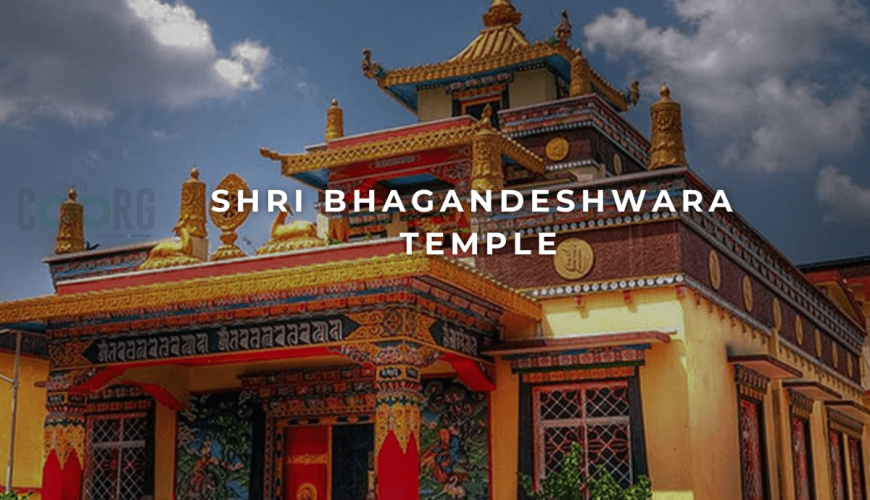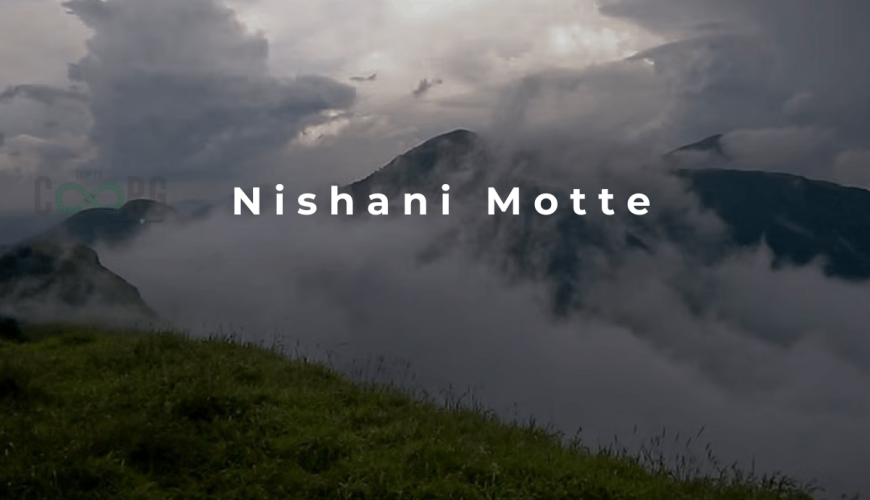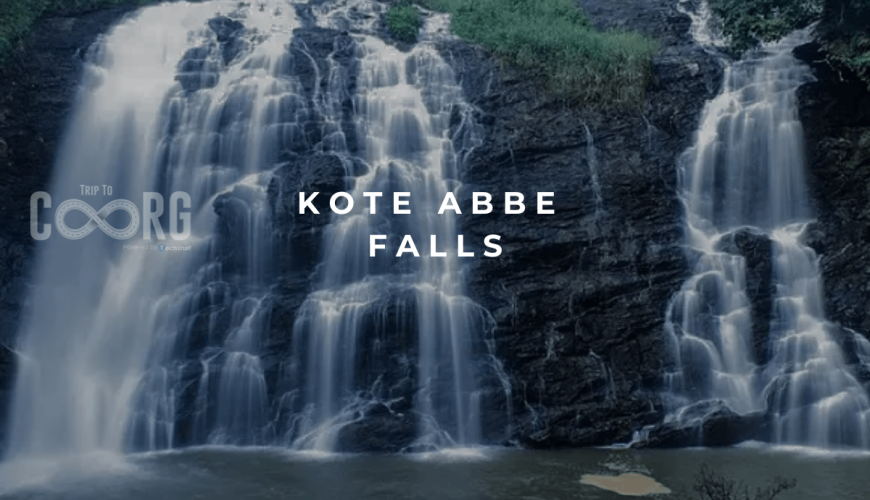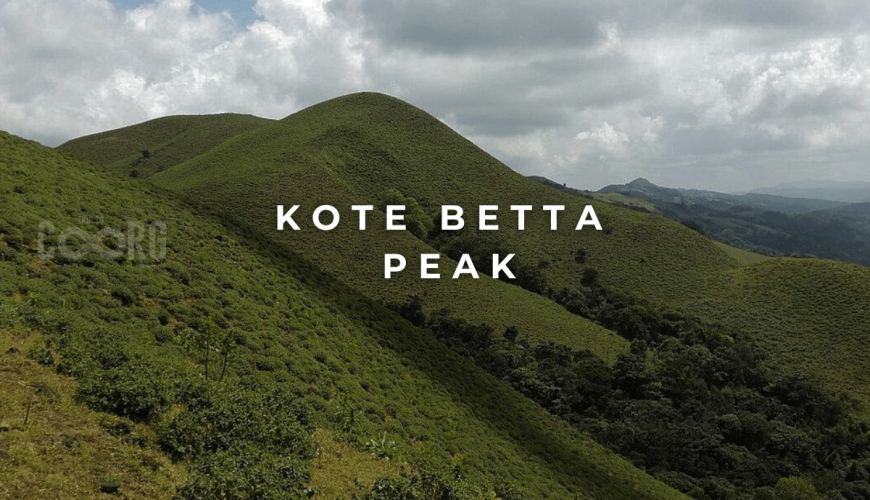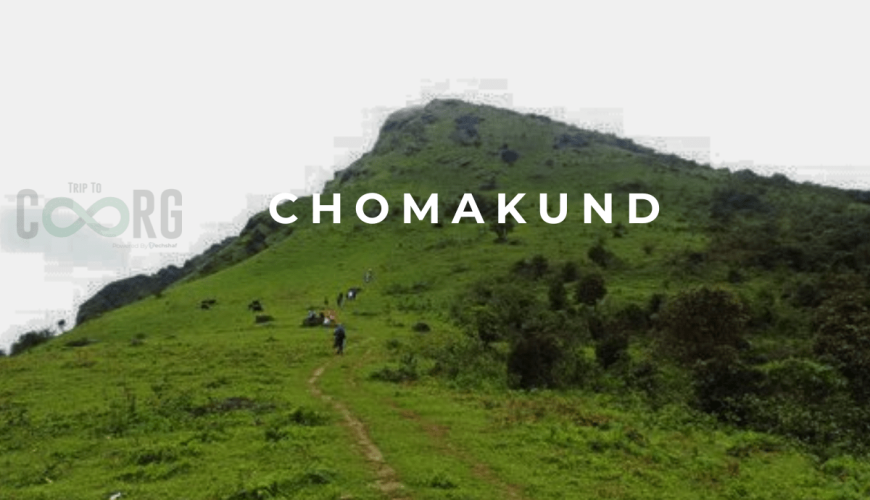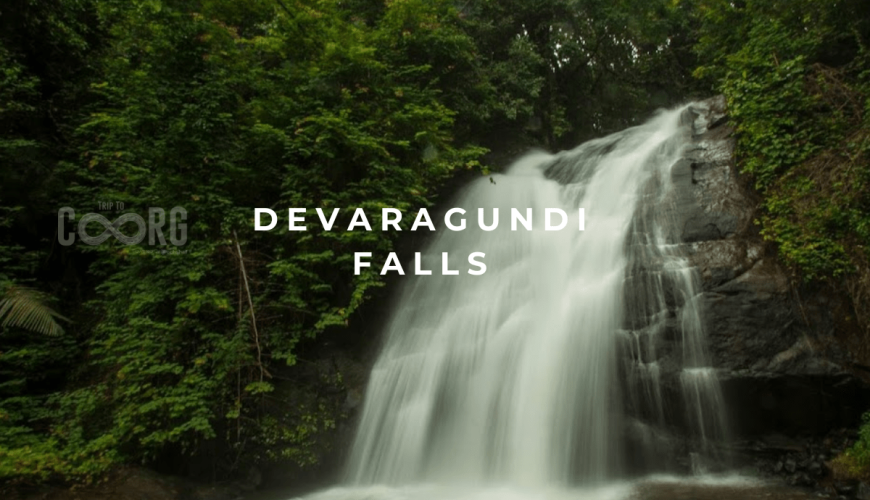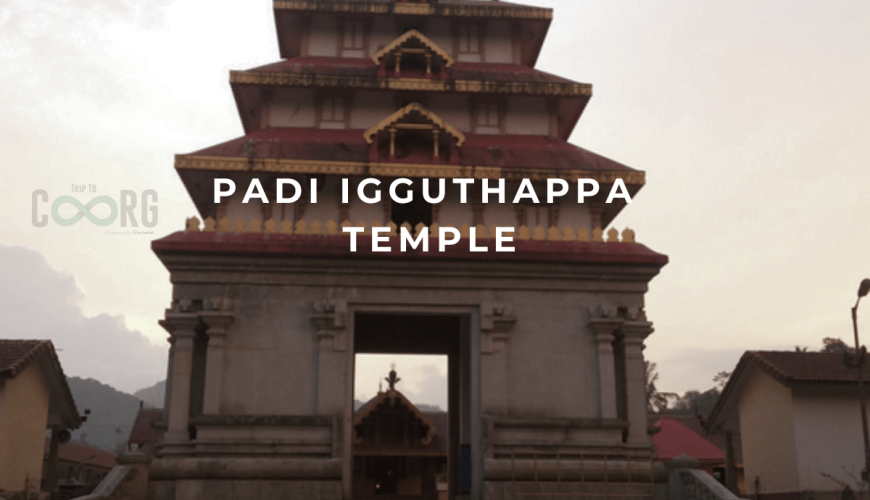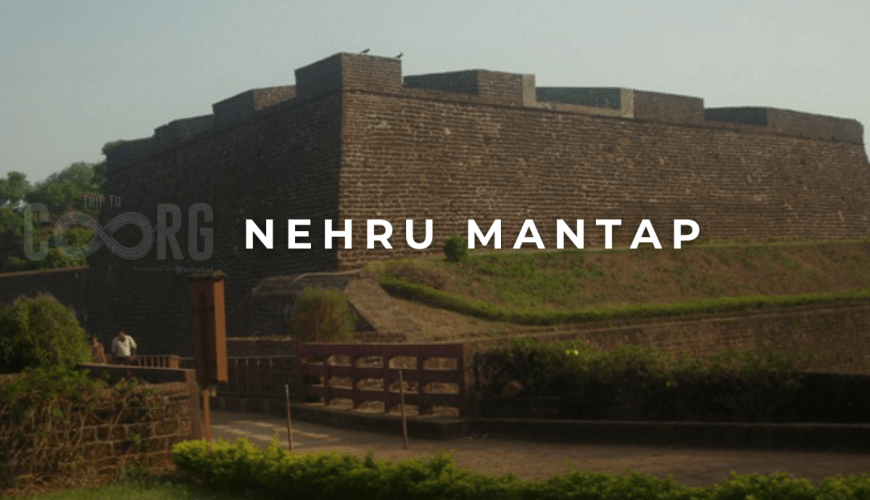Shri Bhagandeshwara Temple (A Sacred Jewel in Coorg)
Introduction: The Shri Bhagandeshwara Temple is a revered Hindu temple located in the town of Bhagamandala in Coorg (Kodagu) district, Karnataka. The Shri Bhagandeshwara Temple stands as a testament to the rich cultural and spiritual heritage of the region. Dedicated to Lord Bhagandeshwara, a form of Lord Shiva, the temple holds significant religious and historical importance. It has roots dating back several centuries. It is believed to be one of the oldest temples in Coorg, with a history that reflects the region’s deep spiritual tradition, devotees believe that worshipping at this temple brings blessings, prosperity, and protection from negative influences. It is an important pilgrimage site and a notable landmark in the region, reflecting the rich cultural heritage of Coorg. Renowned for its historical significance, architectural beauty, and tranquil surroundings, this ancient temple is a revered destination for pilgrims and tourists alike.The temple is an important part of Coorg’s cultural and religious landscape. It hosts various festivals and rituals that are integral to local traditions and practices. The Shri Bhagandeshwara Temple showcases traditional South Indian temple architecture. Its design features a mix of Dravidian and local architectural styles, characterized by intricate carvings, a spacious courtyard, and a richly adorned sanctum sanctorum (garbhagriha). The temple’s walls and pillars are adorned with detailed stone carvings depicting various deities, mythological scenes, and intricate patterns. These carvings reflect the artistic craftsmanship of the artisans who built the temple. Set amidst lush greenery and rolling hills, the temple’s location enhances its serene and peaceful atmosphere. The natural beauty surrounding the temple adds to the overall spiritual experience. The Shri Bhagandeshwara Temple is situated in Bhagamandala, a sacred town known for its confluence of rivers. The temple’s location at the Triveni Sangama, where the Cauvery, Kannike, and Sujyoti rivers meet, adds to its spiritual significance. The serene surroundings and sacred waters enhance the temple’s importance as a pilgrimage destination. Visitors to Shri Bhagandeshwara Temple can expect a tranquil and serene environment. The temple’s peaceful ambiance provides a perfect setting for prayer, meditation, and reflection. For those interested in learning more about the temple’s history and significance, guided tours are available. These tours provide insights into the temple’s architectural features, religious practices, and cultural importance. Distance: From Bangalore: The temple is about 270 kilometres from Bangalore, which takes approximately 6-7 hours by road. From Mangalore: It is approximately 150 kilometres from Mangalore, with a driving time of about 4-5 hours. from Mysore to the Shri Bhagandeshwara Temple is approximately 80 to 90 kilometers, Around 2 to 3 hours The Shri Bhagandeshwara Temple is famous for its religious significance, architectural beauty, and cultural heritage. Key aspects of its fame include: 1.Religious Significance: The temple is dedicated to Lord Bhagandeshwara, an incarnation of Lord Shiva. It is an important site for Hindu devotees who come to offer prayers and seek blessings. The temple’s location at the confluence of three rivers enhances its spiritual importance, as the waters are believed to purify sins and bring divine blessings. 2. Architectural Beauty: The temple features traditional Kodagu architecture, characterised by its intricate carvings, decorative elements, and serene ambiance. The architecture reflects the craftsmanship and religious aesthetics of the region, adding to the temple’s historical and cultural value. 3. Sacred Confluence (Triveni Sangama): The temple is situated near the Triveni Sangama, the confluence of the Cauvery, Kannike, and Sujyoti rivers. This sacred spot is believed to have immense spiritual significance, attracting pilgrims who come to take a holy dip in the confluence and participate in religious rituals. 4. Historical Importance: The Shri Bhagandeshwara Temple has historical connections with the Kodagu royal family and the Mysore Kingdom. It has been a centre of religious and cultural activities for centuries, contributing to its historical and cultural heritage. 5. Cultural Experience: The temple provides a glimpse into the local religious practices, traditions, and cultural heritage of Coorg. Festivals and special events held at the temple attract devotees and visitors, offering an opportunity to experience the vibrant cultural life of the region. The best time to visit Shri Bhagandeshwara Temple is between October and March when the weather is pleasant and conducive to travel and outdoor activities. Visitors should follow any guidelines provided by the temple authorities to ensure a respectful and enjoyable experience. This includes adhering to dress codes, maintaining cleanliness, and following temple rules. Basic facilities are available at the temple, but visitors should carry essentials such as water and snacks. There are also local eateries and accommodation options in the nearby towns. Conclusion: Shri Bhagandeshwara Temple is a sacred and culturally rich destination in Coorg, offering visitors a unique blend of religious significance, architectural beauty, and historical heritage. With its serene location, spiritual importance, and vibrant cultural atmosphere, the temple provides a memorable experience for devotees and tourists seeking a deeper connection with Coorg’s spiritual and cultural traditions.
Nishani Motte (Coorg’s Hidden Gem)
Introduction: Nestled in the heart of Karnataka’s lush Coorg district, Nishani Motte stands as a serene and captivating destination that is often overshadowed by its more famous counterparts. While Coorg is renowned for its sprawling coffee plantations, verdant landscapes, and vibrant culture, Nishani Motte offers a unique allure that is both tranquil and mesmerising. Nishani Motte, a lesser-known yet picturesque hilltop, is a must-visit destination for nature lovers and trekking enthusiasts. Nishani Motte, translated as “The Peak of Nishani” in the local Kodava dialect, is a relatively secluded peak located within the Kodagu district. Nestled in the lush Western Ghats, it offers a tranquil escape into the wild beauty of the Coorg (Kodagu) region in Karnataka, India. With its serene landscape, dense forests, and breathtaking views, Nishani Motte provides an excellent adventure for those seeking a peaceful yet thrilling experience. Unlike the more popular tourist spots in Coorg, Nishani Motte remains relatively untouched and unspoiled, providing a pristine retreat for nature lovers and adventure enthusiasts alike. For those with a passion for trekking, Nishani Motte offers an invigorating challenge. The trek to Nishani Motte is a rewarding journey that takes you through dense forests, coffee plantations, and rolling hills. The trail starts from the base of the hill and gradually ascends through a landscape that changes from lush greenery to rugged terrain.One of the highlights of the trek is the diverse flora and fauna that trekkers encounter along the way. The region is home to a variety of bird species, butterflies, and occasionally even larger wildlife like deer and wild boar. The biodiversity adds an element of excitement and surprise to the trekking experience.The calm and serenity of the summit make it an ideal spot for meditation or simply soaking in the beauty of nature. The area around Nishani Motte is also characterised by its pristine environment. Unlike more commercialised destinations, this hill maintains its natural charm with minimal human interference. The surrounding forests and meadows provide a peaceful setting for relaxation and contemplation. The trek to Nishani Motte begins at Bhagamandala, a small village located about 40 kilometres from Madikeri, the district headquarters of Coorg. Distance: From Bangalore: Nishani Motte is about 275 kilometres away from Bangalore, the state capital of Karnataka. It takes around 6-7 hours by road to reach Coorg from Bangalore. From Mangalore: Nishani Motte is approximately 160 kilometres from Mangalore, which is another major city in Karnataka. from Mysore About 120 to 130 kilometres. This drive typically takes around 2.5 to 3 hours. Nishani Motte is famous for its pristine beauty and relatively undiscovered charm. Unlike other popular trekking spots in Coorg, Nishani Motte is off the beaten track, making it a peaceful retreat for trekkers who prefer solitude and nature in its raw form. Key attractions include: 1.Trekking: The trek to Nishani Motte is moderately challenging, making it suitable for both seasoned trekkers and adventure enthusiasts. The trail takes you through dense shola forests, coffee plantations, and grasslands, offering a diverse landscape. 2.Scenic Views: At the summit, you are rewarded with panoramic views of the Western Ghats, lush green valleys, and surrounding hills. On a clear day, you can see the mist-covered hills stretching into Kerala. 3.Biodiversity: Being part of the Western Ghats, a biodiversity hotspot, the region is home to a wide variety of flora and fauna. Trekkers may spot rare birds, small mammals, and various species of trees and plant 4.Tranquillity: One of the most attractive aspects of Nishani Motte is its serenity. Since it is not as commercialised as other trekking spots, it offers an immersive natural experience, free from crowds. The ideal time to visit Nishani Motte is during the cooler months from October to March. The weather during this period is pleasant, making trekking and outdoor activities more enjoyable. The monsoon season (June to September) can make the trails slippery and challenging, so it is best to avoid this period unless you are prepared for the conditions. As of now, no special permits are required to trek to Nishani Motte. However, it is advisable to check with local authorities or tourism offices for any updates on regulations or requirements before planning your visit. Conclusion: Nishani Motte stands as a testament to the natural beauty and serenity that Coorg has to offer beyond its more famous attractions. Nishani Motte is a hidden treasure in the Coorg district that offers an idyllic mix of adventure, natural beauty, and tranquillity. Whether you are an avid trekker or simply seeking a peaceful escape from city life, For those willing to venture off the beaten path, this hidden gem provides an unforgettable experience of trekking through pristine landscapes and enjoying spectacular views. Nishani Motte is an ideal destination that promises to leave a lasting impression.
Kote Abbe Falls (The Hidden Jewel of Coorg)
Introduction: Kote Abbe Falls is a tranquil and lesser-known waterfall located in the lush hills of Coorg (Kodagu), Karnataka. Known for its peaceful ambiance and scenic beauty, this hidden gem is perfect for those looking to escape into nature. The waterfall is situated about 25 kilometres from Madikeri, the district headquarters of Coorg. Unlike the more popular waterfalls in the region,Kote Abbe Falls remains a hidden gem, providing visitors with an off-the-beaten-path experience, surrounded by dense forests and coffee plantations, This article explores the enchanting allure of Kote Abbe Falls, offering insights into its unique features, accessibility, and the tranquil experience it promises. Kote Abbe Falls offers a serene spot to relax, away from the bustling tourist spots in Coorg. The falls cascade down a rocky cliff into a clear pool below, creating a stunning natural spectacle that is both picturesque and serene.The waterfall is framed by dense forest cover and rugged terrain, which enhances its pristine and untouched appeal. What sets Kote Abbe Falls apart is its relatively unspoiled environment. Unlike other more commercialised attractions, this waterfall has retained its natural charm, providing a tranquil setting that allows visitors to connect deeply with nature. The journey to the falls is as rewarding as the destination itself, offering a unique blend of adventure and relaxation. Upon reaching the vicinity of Kote Abbe Falls, visitors need to embark on a short but invigorating trek to reach the waterfall. The trek offers a close-up view of the region’s rich flora and fauna, adding to the overall experience. As you get closer to the falls, the sound of the cascading water grows louder, heightening the anticipation for the breathtaking view. The water flows gracefully down the rocky face, creating a soothing and picturesque scene. The clear pool at the base of the falls is perfect for a refreshing dip or simply to relax and enjoy the tranquillity. Distance: From Bangalore: Kote Abbe Falls is approximately 280 kilometres away. The drive from Bangalore to Madikeri takes about 6-7 hours. From Mangalore: The falls are located around 150 kilometres away, and the journey takes roughly 4-5 hours by road. From Mysore to Madikeri, the district headquarters of Coorg, is about 120 to 130 kilometres. This leg of the journey typically takes around 2.5 to 3 hours, Once you reach Madikeri, local transportation can be arranged to visit Kote Abbe Falls, which is about a 40-minute drive from the town. Kote Abbe Falls is famous for its natural beauty and the peaceful atmosphere it offers. Unlike the more commercialised waterfalls in Coorg, Kote Abbe Falls is relatively untouched, making it an ideal retreat for nature lovers. Key highlights include: 1. Serene Beauty:The waterfall cascades down amidst lush greenery, providing a perfect setting for relaxation. The surrounding forests and coffee plantations enhance the scenic appeal of the falls. 2. Offbeat Destination: Kote Abbe Falls remains a less-explored spot, attracting visitors who prefer quiet places. Its secluded location offers a peaceful experience, away from the crowds of more popular destinations. 3. Nature Photography: The picturesque landscape makes it a perfect spot for photography. The combination of flowing water, dense forests, and vibrant greenery offers ample opportunities for nature photography enthusiasts. The ideal time to visit Kote Abbe Falls is between October and March. During these months, the weather is pleasant, and the waterfall is at its most impressive following the monsoon season. Visiting during the monsoon (June to September) can also be rewarding if you enjoy witnessing the waterfall in full flow, but be prepared for potentially challenging trekking conditions due to wet and slippery paths.There are generally no formal entry fees to visit Kote Abbe Falls. However, it’s always a good idea to check with local tourism offices for any updates or regulations. Visitors should adhere to environmental guidelines and respect the natural surroundings to help preserve the beauty of the falls. Conclusion: Kote Abbe Falls is a hidden gem in Coorg, offering a peaceful and scenic spot to unwind and enjoy the natural beauty of the region. While it may not enjoy the same level of recognition as some of the region’s more famous attractions, its serene beauty and tranquil environment make it a compelling destination for those seeking an authentic connection with nature. Whether you’re an adventure enthusiast, a nature lover, or someone in search of a peaceful retreat, Kote Abbe Falls offers a refreshing and rejuvenating experience that is sure to leave a lasting impression.
Kote Betta Peak (Coorg’s Majestic Summit)
Introduction: Kote Betta Peak is one of the highest peaks in Coorg (Kodagu), Karnataka, standing at an elevation of about 5,400 feet (1,646 metres) above sea level and is approximately 15 kilometres from Madapur, a small village in Coorg, an awe-inspiring destination that promises breathtaking views and a unique adventure for nature enthusiasts and trekkers alike. Known for its breathtaking views, lush landscapes, and moderate trekking trails, Kote Betta offers a perfect blend of adventure and scenic beauty. The name “Kote Betta” translates to “Fort Hill,” owning to the belief that a fort once stood a top the hill, though now only traces of it remain. Kote Betta Peak offers a rewarding escape from the bustle of everyday life. Standing tall amidst the rolling hills and verdant coffee plantations of Coorg, Kote Betta offers a majestic vantage point that provides sweeping views of the surrounding landscape. The peak is characterised by its rugged terrain, lush green slopes, and a tranquil ambiance that beckons travellers seeking solace in nature. The peak is renowned for its stunning panoramic views that stretch across the Western Ghats and beyond. From the summit, visitors can marvel at the lush green valleys, distant hills, and meandering rivers that define the region’s landscape. The sight of sunrise or sunset from Kote Betta is particularly mesmerising, with the changing colours of the sky adding to the peak’s allure. The trek to Kote Betta Peak is a moderately challenging adventure that takes you through a picturesque landscape of coffee estates, dense forests, and rocky outcrops. The trail is well-defined but can be steep and uneven in places, making it suitable for trekkers with a reasonable level of fitness, including the chirping of birds and the rustling of leaves. The summit is an ideal spot for relaxation, photography, and soaking in the tranquil atmosphere. The summit is an ideal spot for relaxation, photography, and soaking in the tranquil atmosphere. Distance: From Bangalore: Kote Betta is around 285 kilometres from Bangalore, taking approximately 6-7 hours by road. From Mangalore: It is located about 160 kilometres from Mangalore, taking around 4-5 hours to reach by road. Mysore to Kote Betta Peak in Coorg is approximately 140 to 160 kilometres, takes around 2.5 to 3 hours, The trek typically starts from the base village of Madhapur, which is well-connected by local transportation. From there, the trail leads through coffee estates and forests to the peak. Kote Betta is famous for its natural beauty, making it a popular trekking destination for adventure seekers and nature enthusiasts. It offers a range of attractions, including: 1. Trekking Experience: The trek to Kote Betta is moderately challenging, with a well-defined trail that takes trekkers through coffee plantations, grasslands, and forests. The ascent to the peak takes about 3-4 hours, and while it is demanding in parts, the journey is filled with captivating views. 2. Panoramic Views: Once at the top, trekkers are rewarded with panoramic views of the Western Ghats, the rolling hills of Coorg, and distant valleys. On clear days, the view is particularly stunning, with misty hills stretching out as far as the eye can see. 3. Cultural Significance: Kote Betta has a legend associated with it, as locals believe that the hill was once the site of a fort. Though no remnants of the fort are visible, the name “Kote,” meaning fort in Kannada, has remained. There is also a small temple dedicated to Lord Shiva at the summit, where trekkers often stop for a moment of peace. 4. Flora and Fauna:Being part of the Western Ghats, Kote Betta is rich in biodiversity. Along the trek, you can spot various species of birds, butterflies, and wildflowers. The surroundings are green and vibrant, especially during the monsoon season. The best time to visit Kote Betta Peak is between October and March. During these months, the weather is pleasant, with cooler temperatures and clear skies, making the trek more enjoyable. The monsoon season (June to September) can also be a good time to visit if you enjoy lush landscapes and are prepared for potentially slippery trails. As of now, no special permits are required to trek to Kote Betta Peak. However, it is always a good idea to check with local tourism offices or authorities for any updates or changes in regulations. Trekkers should follow local guidelines and respect the natural environment to ensure the preservation of the area. Conclusion: Kote Betta Peak stands as a testament to the natural splendour and adventure that Coorg has to offer. Kote Betta Peak is a must-visit destination for those seeking adventure, natural beauty, and a serene escape in Coorg. Its relatively moderate trekking trail, combined with panoramic views and the peaceful surroundings, makes it an excellent spot for both seasoned trekkers and beginners looking to explore the Western Ghats. Kote Betta Peak provides an unforgettable experience that highlights the best of Coorg’s scenic wonders.
Chomakund (Hidden Gem for Nature Lovers)
Introduction: Chomakund is a serene and lesser-known hilltop located in the picturesque that captivates visitors with its serene beauty and untouched charm Coorg (Kodagu) district of Karnataka. Chomakund is located near the village of Thadiyandamol, about 45 kilometres from Madikeri. It is also close to the border of Kerala and offers panoramic views of both Karnataka and Kerala. Perched at a high altitude, this spot offers breathtaking views of the surrounding hills, valleys, and dense forests. Chomakund is a hidden gem for nature lovers and trekkers who seek an offbeat and peaceful escape into nature. Chomakund offers a unique escape into nature, perfect for those seeking tranquillity away from the bustling tourist spots. With mist-covered hills and the gentle sound of wind rustling through the trees, Chomakund is a perfect getaway from the hustle and bustle city life enchanting allure of Chomakund, exploring its natural features, trekking opportunities, and practical tips for visitors. The name “Chomakund” evokes a sense of mystery and wonder, with the area embodying the quintessential charm of Coorg’s landscape—lush greenery, rolling hills, and a peaceful atmosphere. The peak offers breathtaking views of the surrounding hills, valleys, and coffee plantations. The sunrise and sunset views from Chomakund are particularly spectacular, casting a golden hue over the landscape and providing a serene backdrop for relaxation and reflection. The landscape is a patchwork of verdant greenery and undulating terrain, making it an ideal spot for panoramic photography. The area around Chomakund is teeming with diverse flora and fauna. Along the way, trekkers can enjoy the cool, fresh air and the soothing sounds of nature, making the trek a refreshing experience. Distance: From Bangalore: Chomakund is about 300 kilometres from Bangalore, which takes around 6-7 hours by road. From Mangalore: It is approximately 140 kilometres from Mangalore, with a driving time of about 4-5 hours. From Mysore :It is approximately 140 to 160 kilometres from Mysore, with a driving time of about 4-5 hours by road. Visitors can reach Chomakund by road from Madikeri, and a short trek is required to reach the top of the hill. The trek to the peak is relatively easy, making it accessible to both beginners and experienced trekkers. Chomakund is famous for its breathtaking natural beauty, tranquil surroundings, and offbeat charm. Unlike more crowded tourist spots in Coorg, Chomakund offers a peaceful and secluded experience for those looking to reconnect with nature. Some of the key attractions include: 1. Panoramic Views: From the top of Chomakund, visitors are treated to sweeping views of the Western Ghats, mist-covered hills, and lush green valleys. On a clear day, the views extend far into the neighbouring state of Kerala, creating a mesmerising vista. 2. Serenity and Solitude: As an offbeat destination, Chomakund remains relatively untouched by mass tourism. Its secluded location makes it an ideal spot for visitors seeking solitude and peace amidst nature. The hilltop is perfect for relaxation, meditation, and simply enjoying the tranquil atmosphere. 3. Ideal for Trekking:The trek to Chomakund is an easy-to-moderate climb, making it suitable for trekkers of all experience levels. The trail winds through forests and grasslands, offering beautiful views at every turn. The cool breeze and occasional mist add to the magical experience of the trek. 4. Proximity to Thadiyandamol: Chomakund is located near Thadiyandamol, the highest peak in Coorg. Many trekkers combine their visit to Chomakund with a trek to Thadiyandamol, making it a great adventure for those who enjoy exploring hilltops. 5. Biodiversity: Being part of the Western Ghats, Chomakund is rich in biodiversity. The region is home to a variety of flora and fauna, including endemic plants, birds, and butterflies. Nature enthusiasts will appreciate the abundance of wildlife and the beauty of the surrounding forests. The ideal time to visit Chomakund is between October and March. During these months, the weather is pleasant, with cooler temperatures and clear skies that make trekking and outdoor activities more enjoyable. The monsoon season (June to September) can also be a good time to visit if you enjoy witnessing lush landscapes. Conclusion: Chomakund is an idyllic destination for those seeking tranquillity, natural beauty, and an offbeat adventure in Coorg. With its stunning views, peaceful ambiance, and easy accessibility, it is a must-visit spot for trekkers, nature lovers, and anyone looking to experience the serene charm of the Western Ghats.
Barapole River Scenic Spot
Introduction: The Barapole River is a captivating scenic spot located in the Coorg (Kodagu) district of Karnataka, India. Known for its breathtaking natural beauty and thrilling white-water rafting opportunities, the Barapole River is a favourite destination for adventure enthusiasts and nature lovers alike. The river’s stunning landscape, lush surroundings, and challenging rapids make it a unique spot for outdoor activities and relaxation. The Barapole River, also known as the “Barapole” or “Brahmagiri River,” meanders through the dense forests and hilly terrain of Coorg, offering a picturesque landscape that captivates all who visit. The river’s journey through the rugged terrain of Coorg creates a series of scenic spots where the natural beauty is on full display. The Barapole River is surrounded by rolling hills and dense forests, providing sweeping views of the Western Ghats. The sight of the river winding through the verdant hills is a visual treat and a great opportunity for photography. One of the main attractions of the Barapole River is its thrilling white-water rafting experience, The rafting season generally runs from October to April, when the water levels are optimal for an exciting adventure.For those looking to unwind, the riverbanks of Barapole offer serene spots for picnicking and relaxation. The tranquil surroundings and gentle sound of flowing water create a peaceful atmosphere that is ideal for a relaxing day out in nature. The Barapole River is situated near the town of Kabini, within the Coorg district. The river flows through the dense forests of the Western Ghats and is a tributary of the Cauvery River. It is a part of the Brahmagiri Wildlife Sanctuary, adding to its allure as a pristine and untouched destination. Distance : From Bangalore:The Barapole River is about 270 kilometres from Bangalore, which takes around 6-7 hours by road. From Mangalore: It is approximately 160 kilometres from Mangalore, with a driving time of about 4-5 hours. From Mysore:It is approximately 120 to 140 kilometres from Mysore,with a driving time of about 3.5 to 4.5 hours. The Barapole River is famous for its stunning natural beauty, exciting adventure activities, and serene environment. Key attractions include: 1. White-Water Rafting: The Barapole River is famous for its thrilling white-water rafting experiences. The river features challenging rapids, including grade II and III, making it a popular destination for adventure seekers. The rafting trips offer an adrenaline-pumping experience amidst the scenic beauty of the Western Ghats. 2. Scenic Beauty:The river flows through lush forests and picturesque landscapes, creating a serene and visually stunning environment. The surrounding greenery, combined with the river’s clear waters, provides a perfect backdrop for relaxation and photography. 3. Biodiversity: Being located in the Brahmagiri Wildlife Sanctuary, the area around the Barapole River is rich in biodiversity. Visitors may spot a variety of wildlife, including birds, butterflies, and occasionally larger mammals, adding to the appeal of the location. 4. Nature Walks:The vicinity of the Barapole River offers opportunities for nature walks and trekking. The trails through the forested areas provide a chance to experience the region’s flora and fauna up close, making it a great spot for nature enthusiasts. 5. Serene Environment:Despite the excitement of rafting, the overall environment around the Barapole River remains peaceful and serene. The natural beauty and calm surroundings offer a perfect retreat for those looking to escape the hustle and bustle of city life. The best time to visit the Barapole River for white-water rafting is from October to April, when the river’s water levels are suitable for rafting. For nature walks and relaxation, the cooler months from October to March are ideal. The monsoon season (June to September) brings heavy rains, which can make the river and trails slippery and challenging. Conclusion: The Barapole River is a captivating destination that combines adventure, natural beauty, and tranquillity. Its thrilling white-water rafting opportunities, stunning landscapes, and serene environment make it an ideal spot for adventure enthusiasts and nature lovers alike. Whether you seek excitement on the rapids or a peaceful retreat amidst nature, the Barapole River offers a memorable experience in the heart of Coorg.
Devaragundi Falls (A Hidden Gem of Coorg)
Introduction: Devaragundi Falls is a beautiful and secluded waterfall located in the lush landscapes of Coorg (Kodagu), Karnataka. The name “Devaragundi” translates to “God’s pool” in the local Kannada language, reflecting the serene and almost divine beauty of the place. Devaragundi Falls emerges as a captivating and lesser-known natural wonder. Surrounded by dense forests, coffee plantations, and rolling hills, Devaragundi Falls offers visitors a peaceful escape into nature. While Coorg is famed for its renowned waterfalls like Abbey and Iruppu Falls, Devaragundi Falls offers a serene and unspoiled alternative, making it a must-visit for those seeking a peaceful retreat into nature, explores the enchanting beauty of Devaragundi Falls, providing insights into its unique charm, accessibility, and the experience it offers to visitors. Devaragundi Falls is located near the village of Thodikana, in the southern part of Coorg, close to the Kerala border. It is about 45 kilometres from Madikeri, the district headquarters, and can be reached by trekking through the dense forests and plantations in the region. Devaragundi Falls is located approximately 30 kilometres from Madikeri. Devaragundi Falls, nestled amidst the rolling hills and dense forests of Coorg, is a stunning cascade that flows gracefully over rocky terrain into a tranquil pool below. The falls are relatively secluded, which means they are often less crowded compared to other popular waterfalls in the region. The waterfall is set against a backdrop of lush greenery and rugged terrain, providing a picturesque setting that is both serene and dramatic. The sight of water cascading down the rocks into the pool below is a spectacle that captivates visitors and provides ample opportunities for photography and relaxation. One of the key attractions of Devaragundi Falls is its relatively untouched environment. The surrounding forest and the clear, cool waters of the falls create a refreshing atmosphere, perfect for unwinding and enjoying the serenity of nature. Upon arrival at Devaragundi Falls, visitors are greeted by the sight of the water cascading down the rocky face into a clear, inviting pool. Accessing Devaragundi Falls requires a short trek through forested areas, making it an adventurous yet rewarding destination for nature lovers and trekkers. Distance: From Bangalore: The falls are about 310 kilometres from Bangalore, and the drive takes around 7-8 hours. From Mangalore: Devaragundi Falls is located about 130 kilometres from Mangalore, with a drive time of around 4-5 hours. from Mysore to Devaragundi Falls in Coorg is approximately 130 to 150 kilometres, takes around 2.5 to 3 hours. The trek begins from the village of Thodikana, about 2 kilometres from the falls, and takes visitors through scenic trails surrounded by greenery. Devaragundi Falls is famous for its unspoiled beauty and tranquil surroundings. Unlike more commercialised tourist destinations, it remains largely untouched and offers a refreshing experience for visitors looking to escape into nature. Key attractions include: 1. Pristine Waterfall: Devaragundi Falls cascades down from a considerable height into a crystal-clear pool, creating a serene and picturesque scene. The water here is pure and refreshing, adding to the peaceful ambiance of the location. 2. Offbeat Destination: Since Devaragundi Falls is not as widely known or crowded as other tourist spots in Coorg, it provides a more intimate and peaceful experience. It is an ideal destination for those looking to explore an offbeat location surrounded by natural beauty. 3. Trekking Adventure: The trek to the falls is relatively short but exciting, as it takes you through dense forests, coffee plantations, and streams. Along the way, trekkers can enjoy the scenic beauty of Coorg’s greenery and spot local flora and fauna. 4. Picturesque Setting: The natural beauty surrounding Devaragundi Falls makes it a perfect spot for photography and nature walks. The combination of waterfalls, lush greenery, and peaceful atmosphere creates an ideal setting for relaxation and exploration. The best time to visit Devaragundi Falls is between October and March, when the weather is pleasant and the water flow is steady. During these months, the weather is conducive to outdoor activities and exploring the falls. The monsoon season (June to September) can also be a good time to visit if you enjoy seeing the falls in their full splendour. There are generally no formal entry fees for visiting Devaragundi Falls. However, it’s always a good idea to check with local tourism offices or authorities for any updates or specific regulations. Visitors should respect the natural environment and follow any local guidelines to help preserve the beauty of the falls. Conclusion: Devaragundi Falls is a hidden treasure in the Coorg district, offering a serene and unspoiled escape to the visitors a peaceful retreat into nature. With its pristine waterfall, scenic trekking route, and offbeat charm, it is an ideal destination for those looking to explore the untouched beauty of Coorg. Whether you are a trekker, a nature lover, or someone seeking a quiet escape, Devaragundi Falls provides an unforgettable experience amidst the serene wilderness of the Western Ghats. With its stunning scenic beauty, tranquil environment, and relatively low visitor numbers, the falls provide a perfect setting for relaxation and contemplation.
Padi Igguthappa Temple
Introduction: Padi Igguthappa Temple is a revered Hindu shrine located in the picturesque district of Coorg (Kodagu), Karnataka. Dedicated to Igguthappa, the presiding deity of the Coorgi people, this ancient temple stands as a testament to the region’s unique blend of spirituality and tradition.a local deity worshipped as the god of rain and agriculture, the temple is an important pilgrimage site for devotees and a significant cultural landmark in the region. The Padi Igguthappa Temple holds a prominent place in the cultural and religious life of the Coorgi community. The worship of Igguthappa is closely tied to agricultural prosperity and the well-being of the region, reflecting the agricultural roots and traditions of Coorg. The temple’s serene setting amidst the lush greenery of Coorg adds to its spiritual ambiance. The Padi Igguthappa Temple is situated in the village of Padi, about 25 kilometres from Madikeri, the district headquarters of Coorg. Nestled in the scenic hills and surrounded by coffee plantations, the temple is set against a backdrop of verdant landscapes, enhancing its tranquil atmosphere. The worship of Igguthappa is closely tied to agricultural prosperity and the well-being of the region, reflecting the agricultural roots and traditions of Coorg. The most notable of these is the annual Igguthappa festival, This festival, usually held in January or February, involves elaborate rituals, offerings, and cultural performances that celebrate the deity’s blessings and seek his continued favour for a bountiful harvest. Distance : From Bangalore: The temple is around 270 kilometres from Bangalore, which takes approximately 6-7 hours to reach by road. From Mangalore: It is about 140 kilometres away from Mangalore, with a driving time of around 4-5 hours.From Mysore : It is about approximately 120 to 130 kilometres by road. With a driving time of around 3 to 4 hours. Padi Igguthappa Temple is famous for its cultural significance, spiritual ambiance, and picturesque location. Key aspects of its fame include: 1. Religious Significance:The temple is dedicated to Igguthappa, a local deity considered the protector of agriculture and rain. Devotees believe that worshipping Igguthappa can bring prosperity and good harvests. The temple attracts destination for those interested in exploring local culture and spiritual numerous pilgrims, especially during the annual festival held in honour of the deity. 2. Architectural Beauty:The temple showcases traditional Coorgi architecture with its simple yet elegant design. The structure is made of local materials and reflects the architectural style typical of the region. The serene surroundings and natural beauty complement the temple’s design, creating a peaceful spiritual environment. 3. Annual Festival: The temple hosts an annual festival that draws large crowds of devotees and tourists. The festival includes traditional rituals, music, dance, and cultural performances, providing an immersive experience of Coorg’s cultural heritage. 4. Scenic Location:The temple is set amidst lush coffee plantations and rolling hills, offering visitors a beautiful and tranquil setting. The natural beauty surrounding the temple enhances its spiritual ambiance and provides a picturesque backdrop for visitors. 5. Cultural Heritage: Padi Igguthappa Temple is an integral part of Coorg’s cultural and religious landscape. It reflects the region’s traditions, beliefs, and practices, making it a valuablelity. The ideal time to visit the Padi Igguthappa Temple is between October and March, when the weather is pleasant and conducive to travel and exploration. The temple can be visited year-round, but it’s especially lively during festival times when the atmosphere is filled with cultural vibrancy. Conclusion: Padi Igguthappa Temple is a significant spiritual and cultural landmark in Coorg, offering a serene and picturesque retreat amidst the natural beauty of the region. Its religious importance, traditional architecture, and scenic location make it a must-visit destination for pilgrims and travellers seeking to explore Coorg’s rich heritage. Whether for spiritual reflection or cultural exploration, the temple provides a memorable experience in the heart of Karnataka’s lush landscapes.
Nehru Mantap
Introduction: Nehru Mantap, also known as the “Nehru Pavilion,” is a historic monument located in the Coorg (Kodagu) district of Karnataka, India. This charming structure is named after Jawaharlal Nehru, the first Prime Minister of India, who visited Coorg in 1951. The pavilion is celebrated for its architectural beauty and its role in commemorating Nehru’s visit, making it a notable landmark in the region. Nehru’s visit to the region highlighted his appreciation for its natural beauty and the importance of preserving such landscapes for future generations. The mantap, or pavilion, was constructed to serve as a tribute to Nehru’s vision of integrating nature and development, reflecting his commitment to promoting environmental conservation and cultural heritage. Nehru Mantap stands as a cultural symbol of Coorg’s connection with India’s broader historical and political narrative. The mantap also signifies the respect and admiration that Coorg has for its distinguished visitors and its efforts to honor their legacy. The architecture of Nehru Mantap is both functional and aesthetically pleasing. Its open design allows for unobstructed views of the lush greenery and rolling hills, creating a serene environment for visitors to relax and enjoy. It represents the region’s role in the nation’s post-independence era and its contributions to India’s rich tapestry of cultural and natural heritage. Nehru Mantap is situated in the town of Madikeri, the district headquarters of Coorg. It is located in the heart of Madikeri, within a picturesque garden that offers a panoramic view of the surrounding hills and valleys. The pavilion is conveniently accessible for visitors exploring the town. Distance : From Bangalore: Nehru Mantap is about 270 kilometres from Bangalore, which takes around 6-7 hours to reach by road. From Mangalore:It is approximately 140 kilometres from Mangalore, with a driving time of about 4-5 hours.From Mysore : It is is approximately 90 to 100 kilometres by road. With a driving time of about 2.5 to 3 hours. Nehru Mantap is famous for its historical significance, architectural charm, and scenic location. Key aspects of its fame include: 1. Historical Significance: The pavilion is named in honour of Jawaharlal Nehru, who visited Coorg during his tenure as Prime Minister. The structure commemorates his visit and reflects the historical importance of the town in India’s political and cultural landscape. 2. Architectural Beauty: Nehru Mantap features a distinctive design with a blend of traditional and modern architectural elements. The pavilion is set amidst beautifully landscaped gardens, enhancing its aesthetic appeal. Its elegant structure and tranquil surroundings make it a pleasant spot for relaxation and contemplation. 3. Scenic Views: The pavilion offers stunning views of the lush green hills and valleys surrounding Madikeri. The vantage point from Nehru Mantap provides a serene setting to enjoy the natural beauty of Coorg, making it a popular spot for photography and leisurely visits. 4. Cultural Heritage: The pavilion is an integral part of Coorg’s cultural heritage, reflecting the region’s historical connections and its role in the broader context of Indian history. It serves as a reminder of Coorg’s significance in the country’s political and cultural narrative. 5. Popular Tourist Attraction: Nehru Mantap is a popular tourist attraction in Madikeri, drawing visitors interested in exploring historical landmarks and enjoying scenic views. Its central location makes it a convenient and accessible site for travellers exploring the town. The best time to visit Nehru Mantap is between October and March when the weather is pleasant and conducive to outdoor activities. The peaceful ambiance is perfect for relaxation, reflection, and appreciating the harmonious blend of nature and cultural heritage. Conclusion: Nehru Mantap is a historic and scenic landmark in Coorg, offering visitors a glimpse into the region’s cultural and political history. Its architectural charm, picturesque location, and historical significance make it a must-visit destination for those exploring Madikeri and the broader Coorg region. Whether for its historical value or its serene setting, Nehru Mantap provides a memorable experience in the heart of Karnataka.
Coorg River Rafting
Introduction: Coorg, also known as Kodagu, is renowned for its picturesque landscapes and abundant natural beauty. Among its many attractions, river rafting stands out as a thrilling adventure activity. The river rafting experience in Coorg is centred around the Barapole River and the Cauvery River, both of which offer exciting rapids and stunning surroundings, making it a favourite destination for adventure enthusiasts. It amidst its tranquil beauty lies a pulse-quickening adventure that draws thrill-seekers from across the country—river rafting. Coorg’s river rafting experiences offer an exhilarating way to explore the region’s natural beauty while engaging in a high-adrenaline sport. River rafting in Coorg provides a unique opportunity to combine the thrill of white-water rafting with the breathtaking scenery of the Western Ghats. As you plan and direct the rapids, you’ll be surrounded by dense forests, rolling hills, and pristine riverbanks. River rafting in Coorg primarily takes place on the Barapole River and the Cauvery River. The Barapole River is located near the town of Kabini, while the Cauvery River flows through several locations in Coorg, including Dubare and Bheemeshwari. These rivers are nestled in the lush, hilly terrain of the Western Ghats, adding to the allure of the rafting experience. Coorg’s river rafting provides From Grade II rapids that are ideal for beginners to more challenging Grade IV rapids for experienced rafters, Coorg provides a diverse array of rafting experiences. A typical river rafting experience in Coorg begins with a safety briefing and equipment fitting. Guides provide instructions on how to handle the raft and navigate the rapids. Once everyone is equipped with life jackets, helmets, and paddles, you’ll embark on an adrenaline-pumping ride down the river. The journey includes tackling rapids, manoeuvring through obstacles, and occasionally taking breaks to enjoy the scenic views. Distance: Barapole River: From Bangalore:Approximately 270 kilometres, taking around 6-7 hours by road. From Mangalore:About 160 kilometres, with a drive time of around 4-5 hours. Cauvery River (Dubare): From Bangalore: About 240 kilometres, taking around 5-6 hours by road. From Mangalore: Approximately 150 kilometres, with a drive time of around 4 hours. From Mysore:It is approximately 120 to 140 kilometres by road. with time of around 3.5 to 4.5 hours. Coorg River Rafting is famous for its thrilling rapids, scenic beauty, and the unique adventure experience it offers. Key highlights include: 1. Thrilling Rapids: The Barapole River, known for its challenging white-water rapids, provides an adrenaline-pumping experience for adventure seekers. Rapids range from grade II to IV, offering both excitement and a test of rafting skills. 2. Scenic Beauty:Both the Barapole and Cauvery Rivers flow through breathtaking landscapes, including dense forests, rolling hills, and serene valleys. The natural beauty surrounding the rivers enhances the overall experience, providing stunning views and a sense of tranquillity amid the adventure. 3. Adventure for All Levels: River rafting in Coorg caters to different levels of experience, from beginners to seasoned rafters. The Cauvery River’s sections offer a more relaxed experience with gentler rapids, making it suitable for novices, while the Barapole River is ideal for those seeking a more intense adventure. 4. Biodiversity: The river areas are rich in flora and fauna, including various species of birds and wildlife. While navigating the rapids, rafters can also enjoy the opportunity to observe the diverse ecosystem along the riverbanks. 5. Popular Rafting Spots: Barapole River: Known for its thrilling rapids and challenging sections, Barapole is a premier destination for white-water rafting in Coorg. Cauvery River (Dubare):Offers a more relaxed rafting experience with beautiful surroundings, making it popular among families and beginners. The ideal time for river rafting in Coorg is from October to April. During these months, the weather is pleasant, and water levels are suitable for rafting. It is advisable to book your river rafting adventure in advance, especially during peak tourist seasons. Costs vary depending on the rafting operator, the duration of the trip, and the type of rapids. Conclusion: Coorg River Rafting offers an exhilarating adventure amidst the stunning natural beauty of the Western Ghats. With its thrilling rapids, picturesque landscapes, and diverse rafting options, it is an ideal destination for adventure enthusiasts and nature lovers alike. Whether tackling the challenging rapids of the Barapole River or enjoying a more relaxed float on the Cauvery River, Coorg provides a memorable and exciting experience for all.

